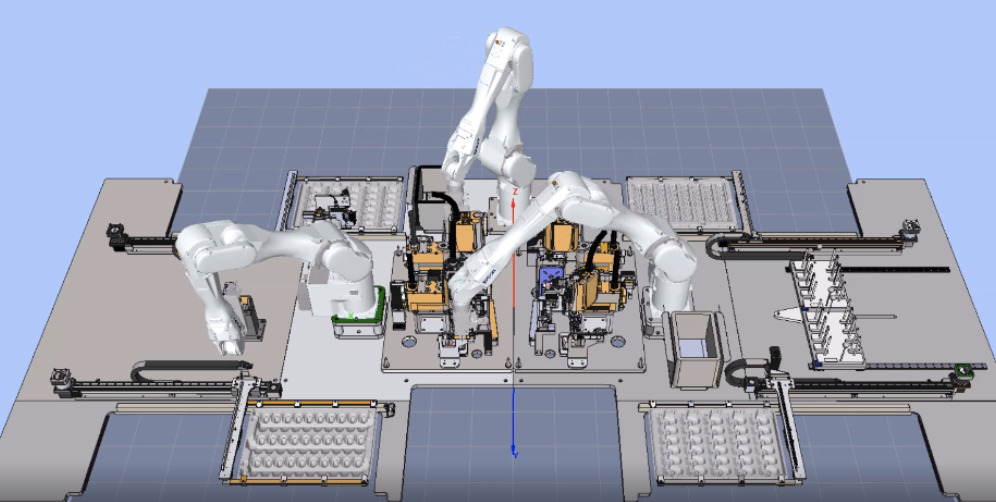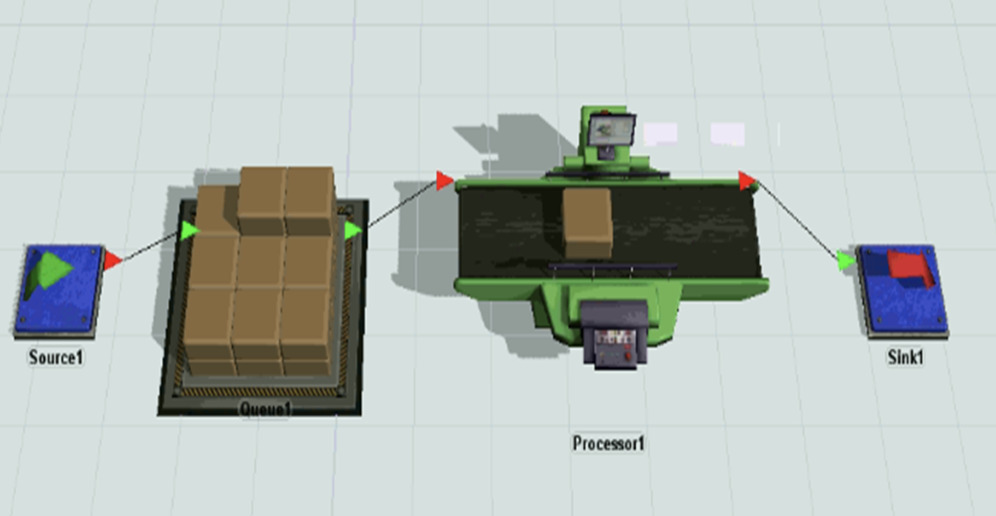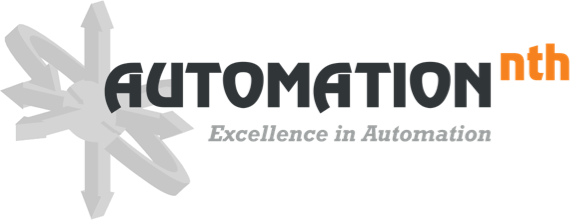“Applying modern technologies to industrial manufacturing processes allows us to have better control and provides new capabilities. With a more modern approach, we can bring greater versatility to the equipment” – Dan Barber, Director of West Coast Operations for Automation NTH.
There are several technologies that characterize modern manufacturing practices:
Connectivity
Modern manufacturing connects with equipment on-site and remotely, tracks and analyzes data, visualizes the manufacturing environment, and communicates with customers.
A key element of manufacturing connectivity is the Industrial Internet of Things (IIoT), where information technology meets manufacturing operations. IIoT may include software-defined production, machine-to-machine communication, and more. IIoT is one of a suite of tools that can play a role in the modern manufacturing environment.
Each piece of a manufacturing process has many possible data points that can track its efficiency and effectiveness. This might include:
- how much raw material goes to waste
- Wasted raw material is an indication of process inefficiency, poor process design, or raw material design that doesn’t lend itself to manufacturability. Was the raw material designed with automation in mind? Were waste tolerances defined during the design process?
- how long it takes to complete a process step
- Overall cycle time can be analyzed by examining the cycle times of contributing process steps. What are the rate-limiting processes? Can processes be done in parallel that are currently being done in series? Is it worth duplicating a station to reduce bottlenecks? Sometimes allowing a higher tolerance for station cycle time can increase yield percentage.
- how much product yield
- What yield is required to achieve a desired ROI? Knowing the required yield will drive cycle time requirements.
- measurements such as ambient temperature, pressure, lighting conditions, etc.
- Ambient conditions can affect machine performance. Understanding how environmental changes impact a process will help eliminate impediments to machine performance.
With IIoT enabled equipment, automation equipment can send metrics to a centralized database for analysis.
As connectivity increases throughout the production floor, previously isolated pieces of equipment are now able to “communicate” with each other. SCADA, or Supervisory Control and Data Acquisition, can be implemented to current and existing equipment. For example, a widget that is produced on one piece of equipment, might be used in a downstream process. Allowing these endpoints to pass data back and forth can create a feedback loop to tighten manufacturing control.
Supervisory control allows personnel to monitor several Key Performance Indices across several pieces of equipment simultaneously. This provides a more ‘birds-eye’ view of a production line, an entire production floor, or even one or several entire production sites.
Artificial Intelligence
Modern manufacturing can even move beyond collecting data to making decisions without human intervention. Manufacturers can use AI to make faster and more accurate decisions than humans can. For example, predictive maintenance, an AI application, uses machine data to detect at-risk components before they fail and cause damage.
Traditionally, maintenance was done on a routine time-based schedule, or worse, only after failure occurred. By establishing baseline performance levels of equipment, operators can define limits against which they can be alerted if equipment starts to trend out of norm. This allows maintenance personnel to address risks before they become issues.
Taking the process even further, these analytic tools can be connected to inventory management software, to alert staff when spare parts need to be ordered.
Machine Vision
Another use of Artificial Intelligence is Machine Vision. As Machine Vision has become standard in many automation environments, Systems Integrators are incorporating cameras in increasingly more challenging applications. The need for tools beyond the traditional ‘edge detection’ and ‘pixel value’ has given rise to Machine Vision that uses Deep Learning and Artificial Intelligence. Instead of the engineer deciding which features of an image to look for to extract useful information, products such as Cognex’s ViDi, allow the engineer to train a library of images and allow the computer to create ideal models, against which inspections will be compared during actual production.
Simulation and Digital Twins
Modern manufacturing strategies take advantage of simulations to evaluate production system designs. Manufacturers can understand factors such as staffing levels, output, and operator needs by simulating the manufacturing environment before installing equipment.
At AutomationNTH, experts use software to create digital models that simulate the movement of robots. These models – or “digital twins” of machines and production environments – allow manufacturers to see how the product line will run before putting down a single piece of equipment.
“There was a time when only Fortune 100 manufacturers could afford simulations, but with significant cost reductions, simulations are much more readily available,” Barber said. “It allows you to optimize an operation while minimizing the footprint. And, you can make sure you can achieve the desired outcomes.”
Simulations can help manufacturers predict potential bottlenecks in the process and anticipate operator training needs.
Simulating aspects of automation equipment has several benefits. Simulations help prove design concepts, expose design flaws, mitigate risk, estimate staffing needs, and provide a platform to test changes without altering the actual production environment.
Robot Simulations
One of the most common simulation applications is in programming industrial robots.
Above is an example of a production environment where several six-axis robots have overlapping work envelopes. The design allowed the production cell to have a smaller footprint, but increases the risk of collision between robots. Simulations help the engineer prove that coordinated motion between robots will not cause a collision.
Robot simulations also help prove that robots are capable of reaching all their work stations, and can provide a very realistic estimation of cycle times.

PLC Simulations
Simulating PLC code can be very helpful when changes need to be implemented to a machine that has already completed Validation & Verification. Simulation environments, such as Logix Emulate, can be used to test logic and confirm that behavior is as expected. PLC Simulation platforms can also be integrated into other simulation environments for a comprehensive representation of a real world physical machine.
Production Environment Simulations
In addition to simulating the individual components of automation equipment, the entire production environment can be simulated. Software like FlexSim and Visual Components allow AutomationNTH to simulate processes that drive factors such as throughput, downtime, blockages, starvations, and ultimately calculate a very close approximation to Overall Equipment Effectiveness (OEE). Simulating production environments can also take into consideration the human resource aspect of automation. How does equipment performance vary with operator quantity, skill level, and shift time? These are all factors that can be determined via simulation.

A simple example of a process simulation including a Source, Process, and Sink
Augmented reality
Integrating augmented reality into the manufacturing process is an important step for a modern manufacturing strategy. Augmented reality combines the digital and physical worlds in real-time.
Modern manufacturing tools also include the use of augmented reality for training, digitizing work instructions and maintenance protocols, communicating with offsite experts, and more.
Some companies utilize ‘smart glasses’ with augmented reality to let them look through manuals on the manufacturing floor and to remotely interface with engineers. This technology allows easier accessibility for remote troubleshooting and equipment servicing.
If you are interested in learning more about modern manufacturing technologies that you can implement on your factory floor, click here.
